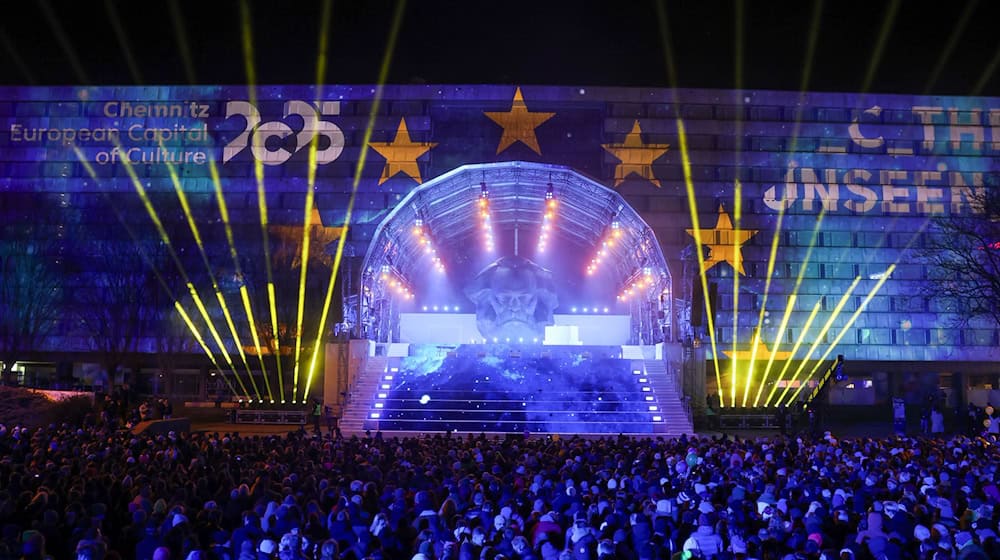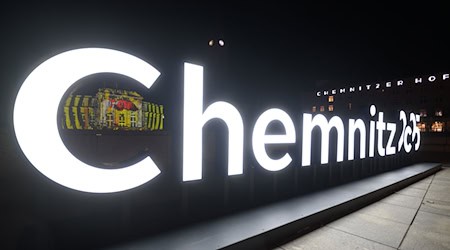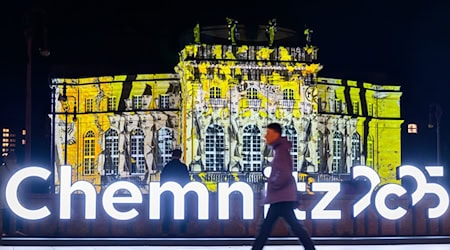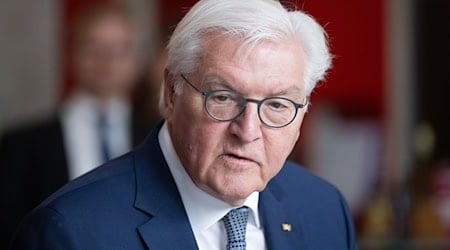As the European Capital of Culture 2025, Chemnitz has big names lined up until the very end. Although the curtain officially falls on the year of culture this weekend, another top-class work of art will be opened at the "Purple Path" lighthouse project: US artist James Turrell, internationally acclaimed as a master of light, has created an installation entitled "Beyond Horizons". It will be shown in a hall on a former mine site in the region.
But what is the overall balance of the Capital of Culture year? And what will remain of it in the future?
OB: Prejudices and hearsay turned into personal experience
"It was a year that moved and changed the city and the region in many ways," says Lord Mayor Sven Schulze (SPD). Chemnitz has become more visible - especially for people from outside. "For many guests, prejudices and hearsay have become their own experience." And many people who live in the city have become involved and committed. The head of the city not only refers to around 1,300 volunteers in the volunteer program. But also to the participation in many small projects, for example in the city's garage yards. A broad concept of culture that does not just focus on exhibitions and concerts has contributed to this, says Schulze.
Significantly more guests in museums and hotels
Around two million visitors - that's the target. In any case, the festivals and museums met with great interest and some opening hours were extended. The Kosmos Festival alone attracted around 115,000 visitors, while the Hut Festival also attracted twice as many people as last year at 105,000, according to the organizers. The large exhibition of works by the painter Edvard Much in the art collections attracted 84,000 visitors.
The Capital of Culture effect can also be seen in the figures for the hospitality industry. While guest arrivals and overnight stays in Saxony as a whole fell from January to September compared to the previous year, growth of more than 9 percent was achieved in the Chemnitz-Zwickau travel region, according to figures from the State Statistical Office. Overall, the statistics for the region show a good 916,000 overnight stays in this period. The diverse cultural offerings are also likely to have attracted many day tourists and visitors from the region.
Expenditure climbed to around 115 million euros
Originally, a total budget of around 90 million euros was estimated - not just for the Capital of Culture year 2025 itself, but for the period 2021-2027. However, it was possible to activate additional funds for investments in the city's infrastructure via funding programs, explains Schulze. The city has also increased its share by around 10 million euros. The budget now stands at around 115 million euros. Of this, around 58 million euros went into the program, personnel and advertising - about as much as originally planned.
Felix Kummer: Addressing right-wing extremism more clearly
In the race for the title of Capital of Culture, Chemnitz came out on top against cities such as Nuremberg and Hanover - partly because it clearly addressed its dark sides, such as the right-wing extremist excesses, in its application in 2018. At the time, there were racist attacks in the Saxon city, and there was talk of hunts for foreigners.
In the opinion of musician Felix Kummer, who initiated the #WirSindMehr concert with his band Kraftklub in 2018, right-wing extremism was not addressed enough in the Capital of Culture year. "I would have liked a clearer distinction," he says. "That's why we as a band couldn't really make this whole thing our own at first." Overall, however, he and his bandmates really enjoyed the year.
Study: High visitor satisfaction and image boost
"The city's image has improved significantly over the course of the Capital of Culture year," says social scientist Jochen Mayerl from Chemnitz University of Technology. He and his colleagues conducted extensive surveys and interviews before and during the Capital of Culture year - with people from Chemnitz and Saxony as well as visitors. The image value of Chemnitz among visitors improved significantly from 3.6 to 4.5 points on a scale of 0 to 6.
"Such a leap is amazing," explains the expert. Visitor satisfaction was high throughout the year - a total of 87 percent said they were satisfied. However, these are preliminary figures and the evaluation is still in full swing, Mayerl emphasizes.
The curtain falls: What remains of the Capital of Culture year?
This weekend, the finale will be celebrated. But the Capital of Culture feeling is to be kept simmering. Some festivals, such as Kosmos, are firmly planned for 2026, albeit on a smaller scale. And from mid-June, the city will become a theater mecca: around 40 productions from all over the world will be shown at the "Theater der Welt" festival.
An "Unseen Biennale" is planned every two years; with festivals and larger exhibitions - in line with the Capital of Culture motto "C the Unseen". The NSU Documentation Center and the newly created Karl Schmidt-Rottluff Museum will also remain open after 2025.
While the special series of exhibitions at the museums is coming to an end, art lovers can continue to stroll along the "Purple Path" - the art and sculpture trail that connects Chemnitz with the surrounding area. Most of the works by artists such as Olaf Holzapfel, Tony Cragg, Monika Sosnowska and Leiko Ikemura will remain in place over the coming years. This includes the new light installation by James Turrell. An art gallery was built especially for it next to the "Kohlewelt" museum in Oelsnitz/Erzgebirge.
Copyright 2025, dpa (www.dpa.de). All rights reserved










